US architecture Ross Barney Architects has completed a NASA laboratory for deep-space technology testing in Cleveland, USA, which includes a tower made of pre-cast concrete panels for testing antennas.
Ross Barney Architects created the Aerospace Communications Facility at the NASA Glenn Research Center in Cleveland, Ohio, which originally opened as the Aircraft Engine Research Laboratory in 1942 to test jet propulsion.
The building forms part of a master plan for the NASA site, which has also been designed by Ross Barney Architects.
The Aerospace Communications Facility was created for the testing of deep-space technology such as radars and lasers, so the studio started from a consideration of the function when implementing its design.
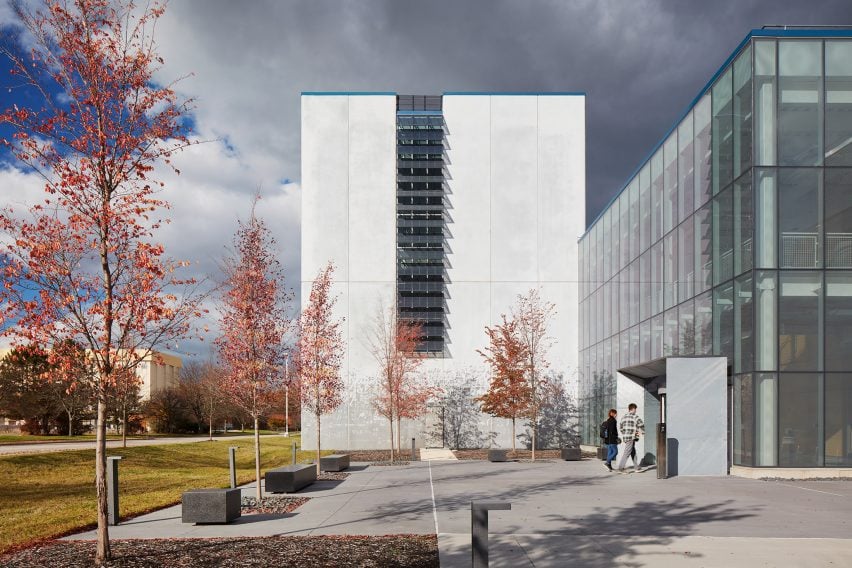
This included the creation of a special concrete mixed with copper for a series of precast walls erected for a radar antenna-testing lab, which stands as a siloed element taller than the rest of the glass-clad building with a separate foundation.
The copper in the concrete allows for the building to act like a Faraday cage, completely isolating it from outside radio interference.
Etchings from the chalkboard seen in the film Hidden Figures fill the bottom edges of the precast panelling.
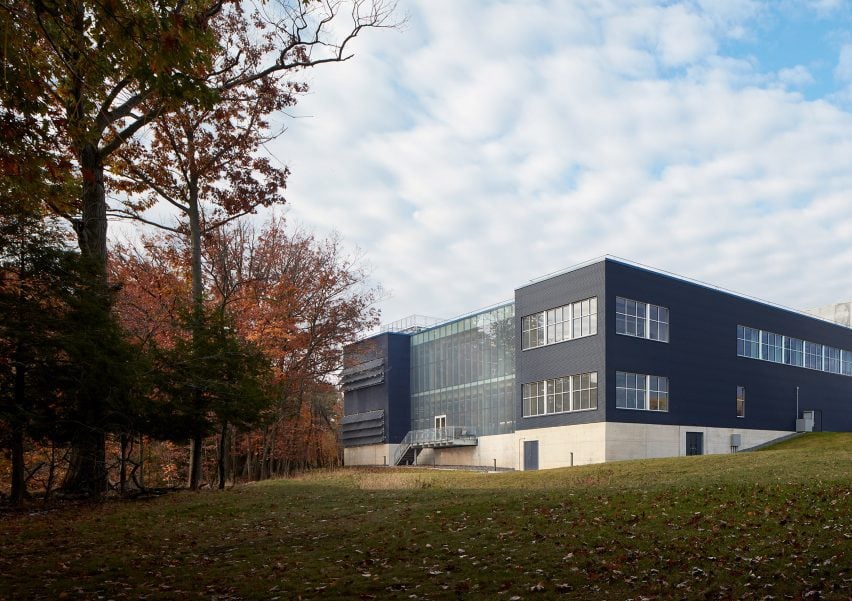
In the rectangular, glass-clad volume, a central core was structurally isolated from the building to create stable conditions for the testing of space lasers and other sensitive equipment.
AIA Gold Medal-winning architect and founder of RBA Carol Ross Barney said that the building is an expression of its function.
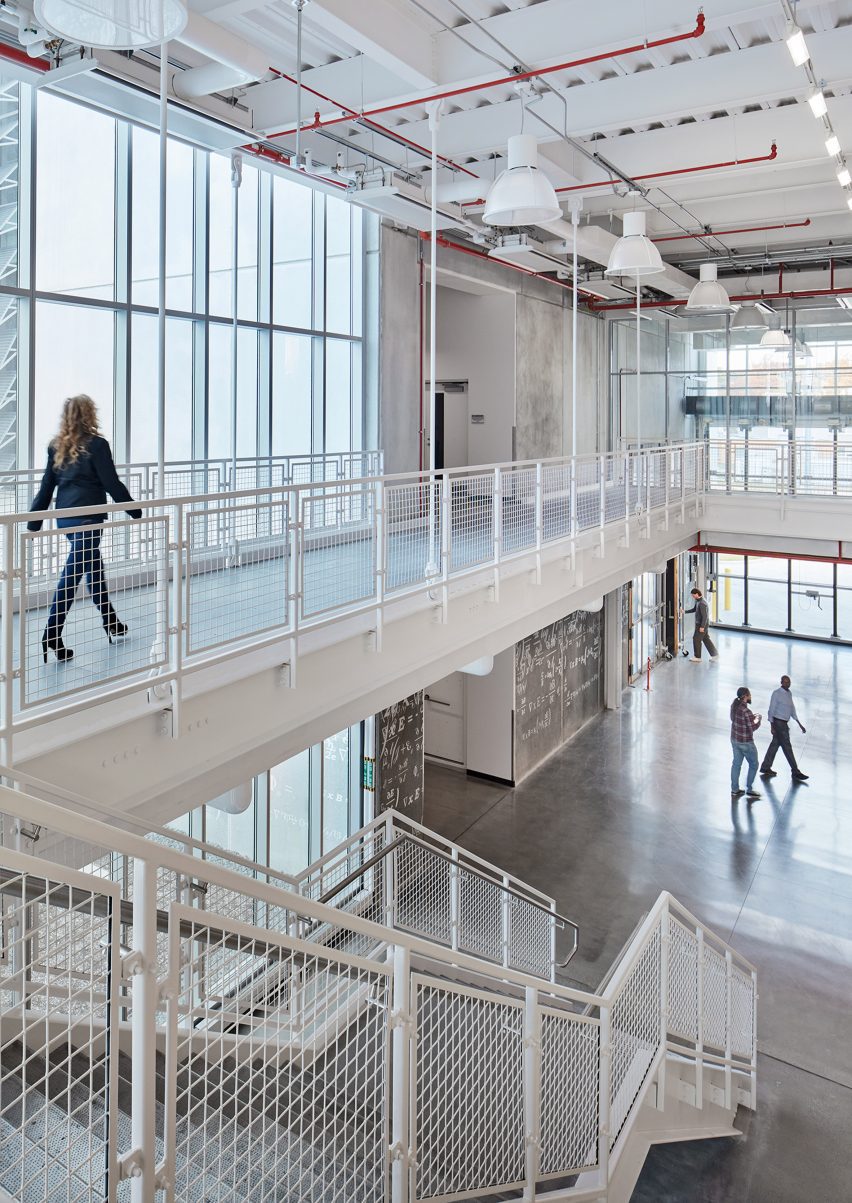
“This building is totally an expression of what is happening there,” she told Dezeen. “There is no aesthetic driver.”
“For a long time I’ve felt that the best architecture is integrated and functional,” she continued.
“The beauty is the result of the integration of those needs. This building is only about what’s in it.”
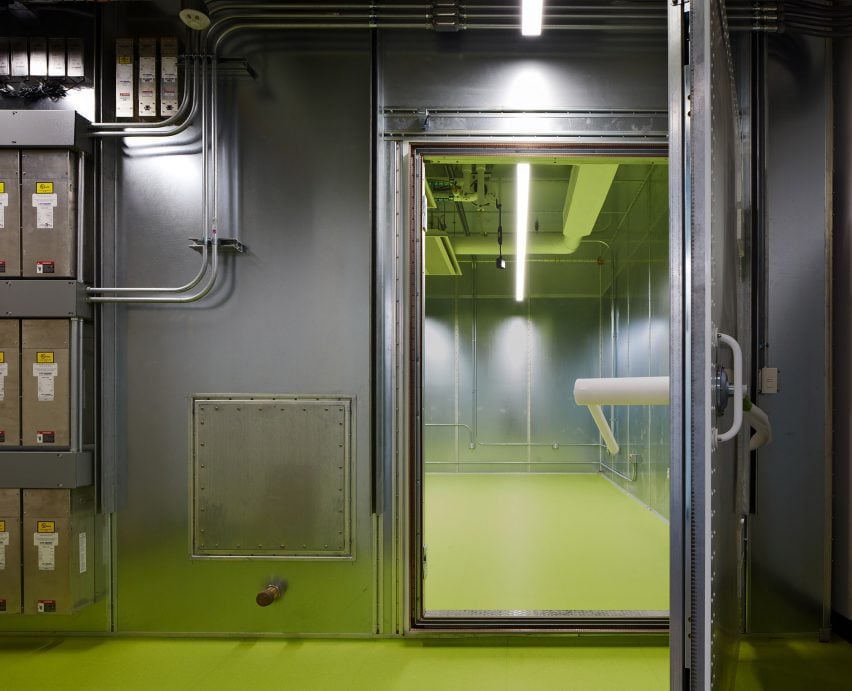
Outside of the more heavily controlled zones, other functional elements were emphasised. On the exterior, undulating metal shutters were extended from the building to control light.
On the interior, the studio exposed the metal piping on the ceiling that supplies the various labs, which Ross Barney compared to the aesthetics of spaceships.
The outer portion of the glass building has meeting spaces and work areas. The entry pavilion is a double-height space, with part of its walls made up of the etched precast concrete panels.
On the second level is a large pane of fritted glass that looks out over a treeline and a ravine.
The polished concrete flooring was painted in some areas to add brightness, and a series of meeting rooms with glass walls were pushed to the outside of the plan, flanking the simple rectangular circulation.
The building achieved a LEED Gold rating and was designed to be Net Zero Ready, with hydronic systems such as chilled beams, geothermal heating and radiant heating panels.
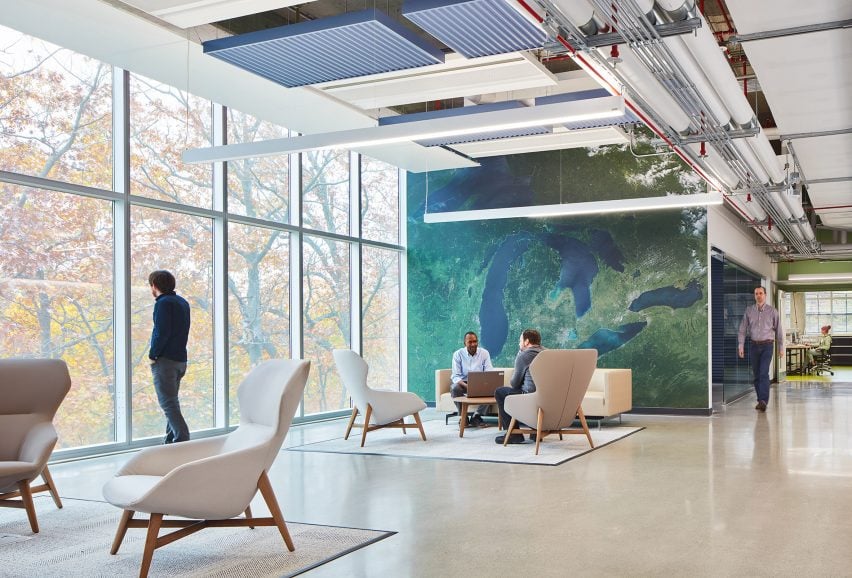
Ross Barney described the building and the surrounding campus as “like a machine” for research and said that hopefully it will work on more building designs as the campus expands.
Other buildings on the campus include a Research Support Center by TEN Arquitectos with a massive cantilevered walkway extending from its second level.
Project credits:
Architect: Ross Barney Architects
Safety consultant: APTIM
Mechanical, electrical, plumbing, fire protection engineer: dbHMS
Civil/ Environmental Engineer and Surveyor: Environmental Design Group
RFI/EMI mitigation designer: Field Management Services (
Security consultant: Guidepost Solutions
Laboratory planner: HERA Laboratory Planners
Geotechnical engineer: Terracon
Cost estimation: The Concord Group
Structural engineer: Thornton Tomasetti
Protective design: Thornton Tomasetti-Weidlinger Protective Design
Acoustical designer: Threshold Acoustics
Communications engineer: Waveguide Consulting

